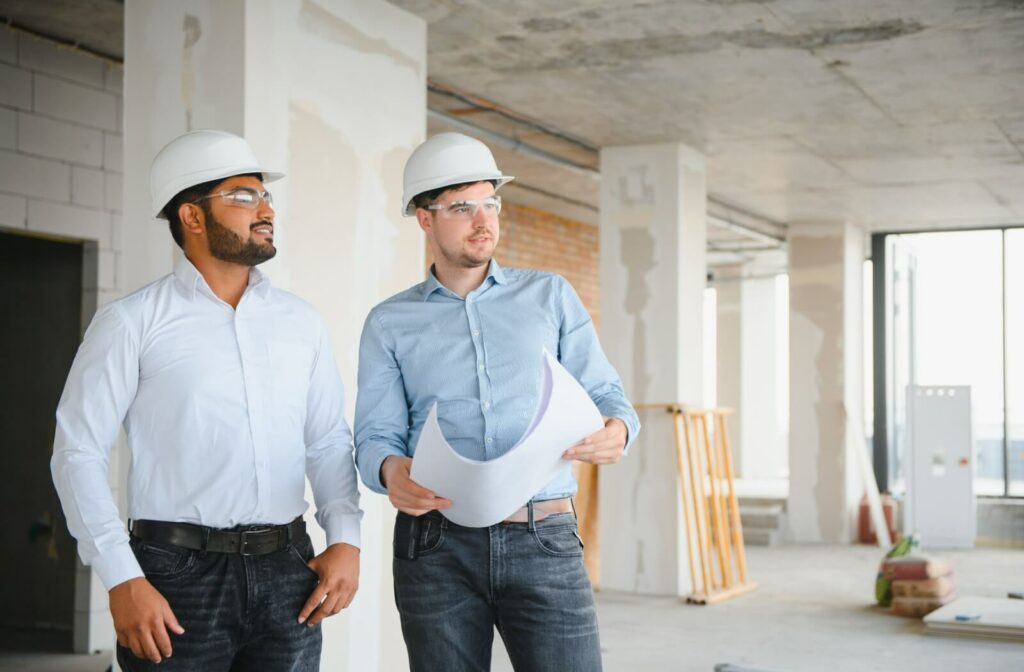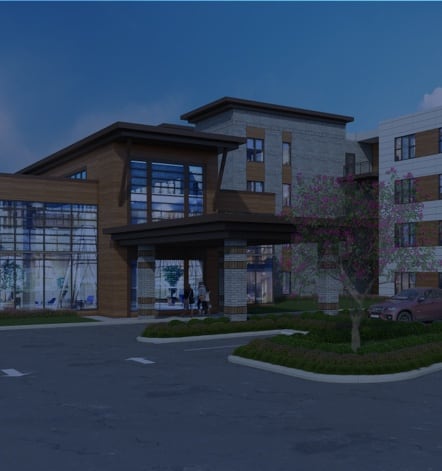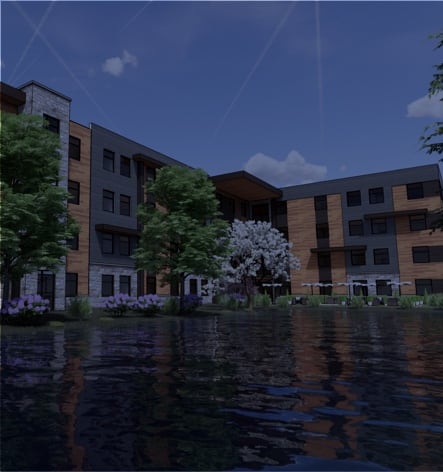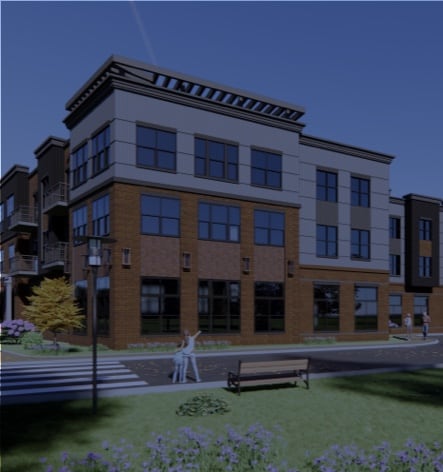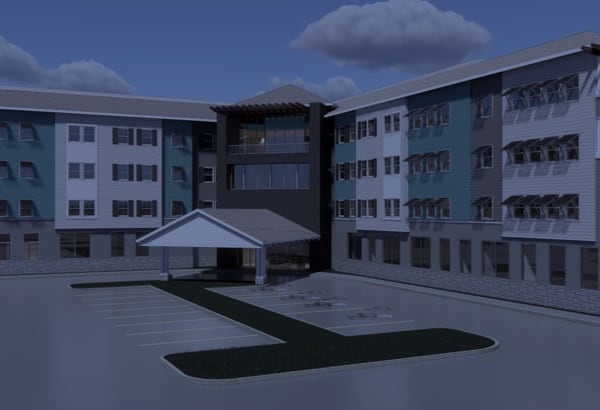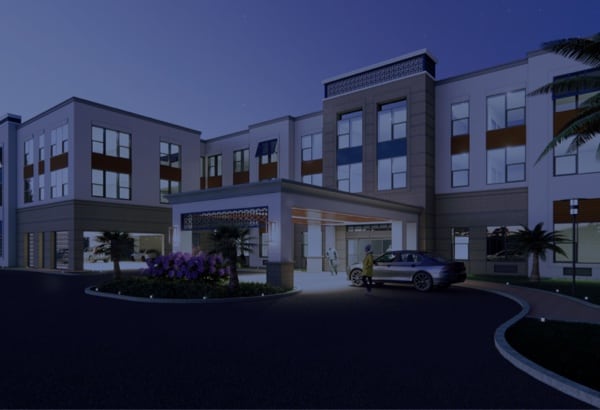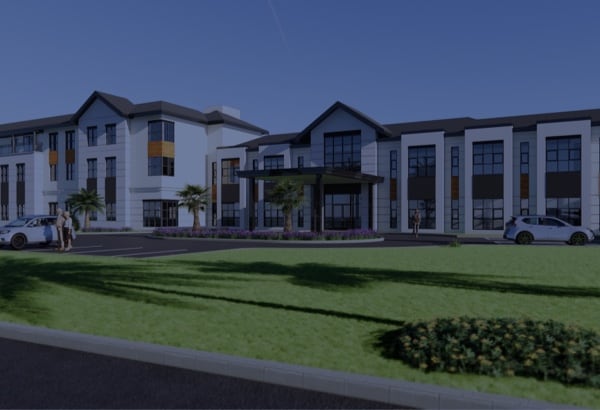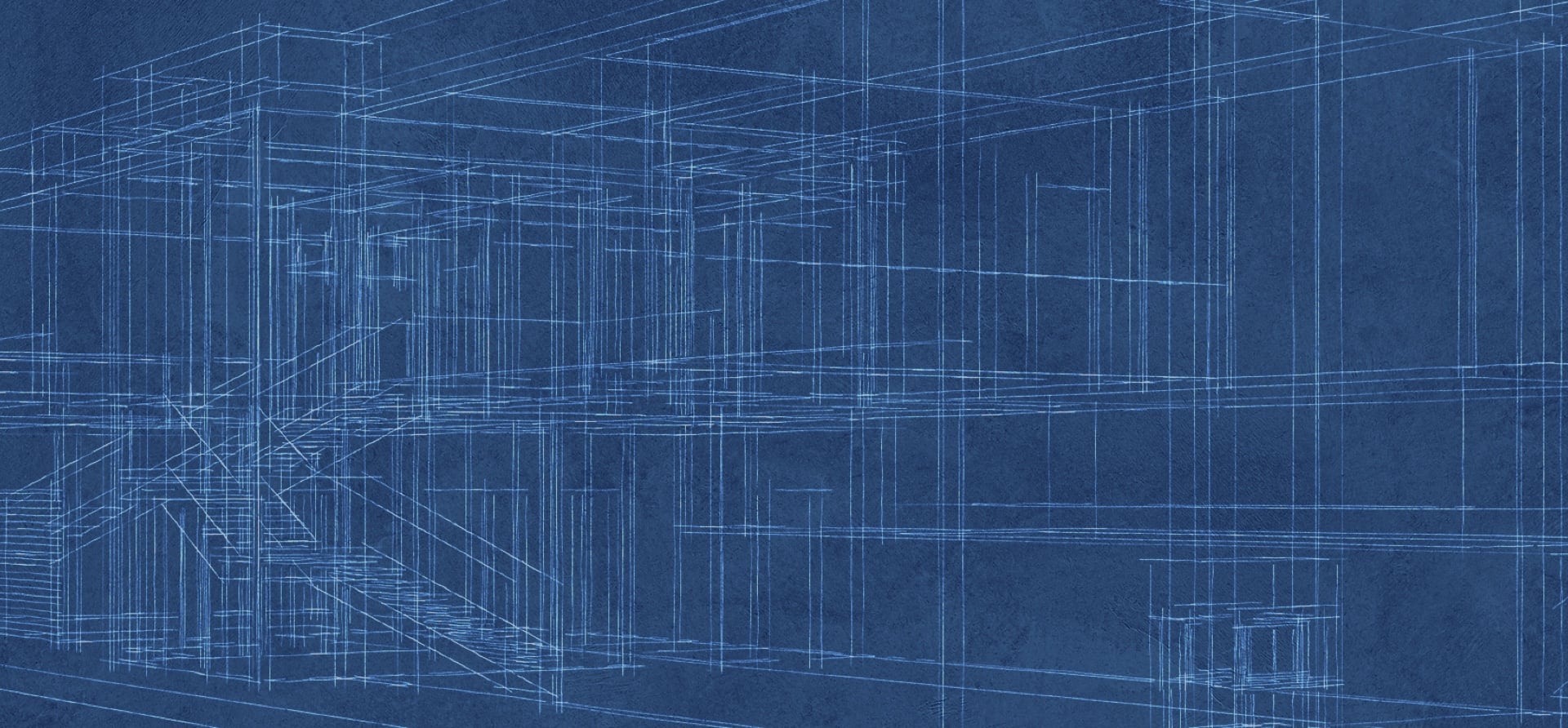Constructing a senior living community involves more than quality construction—it begins with strategic development planning and consulting to guide every phase of the process. Creating environments where seniors can thrive requires a deep understanding of accessibility, wellness, safety, sustainability, and lifestyle preferences.
Developers in this rapidly growing industry must balance regulatory demands, long-term functionality, and evolving market expectations to deliver spaces that support aging with dignity and respect.
Factoring in location strategy, regulatory compliance, universal design, technology integration, wellness features, and operational planning is essential for building successful, future-ready communities.
Site Selection & Planning
Livability Should Drive Location Decisions
Choosing a location with nearby medical services, pharmacies, grocery stores, and recreational areas significantly improves resident quality of life. Access to public transit, sidewalks, and safe walking paths supports independence and helps families stay connected.
Land Characteristics Influence Feasibility
Topography, drainage, natural light, and local infrastructure can impact both construction logistics and the daily resident experience. Thoughtful planning at this stage lays the groundwork for a successful and sustainable build.
Zoning & Regulatory Compliance
Understand Local Codes & Healthcare Licensing
Local city laws, building codes, and assisted living licensing requirements all influence what can be built and how services are delivered. These constraints should be fully explored before any design work begins.
Avoid Delays Through Early Compliance Checks
Getting ahead of permitting, health and safety regulations, and accessibility standards ensures a smooth construction timeline. Addressing these factors early reduces legal risks and costly redesigns later.
Accessibility & Universal Design
Prioritize Functionality Without Sacrificing Comfort
Senior living environments must be safe and easy to navigate. That includes zero-step entrances, wide doorways, non-slip flooring, grab bars, and lever-style hardware. These features are necessary, not optional.
Integrate Accessibility Seamlessly
Thoughtful layouts and design choices make accessibility feel natural and unobtrusive. Materials, colors, and furnishings can maintain a residential feel while still meeting the highest safety standards.
Community Engagement & Shared Spaces
Encourage Social Connection Through Layout
Human connection is one of the most important contributors to well-being, especially for older adults. Intentional design of communal spaces—lounges, dining areas, activity rooms, and libraries—promotes everyday interaction and combats isolation. These areas should be central, easily accessible, and inviting.
Support Daily Life with Versatile Programming Areas
Spaces that accommodate both active and quiet activities ensure a wide range of interests are served. Flexibility is key for hosting everything from fitness classes to group crafts or family celebrations.

Wellness & Health Integration
Design for Ongoing Physical Activity
Fitness centers, therapy rooms, outdoor walking trails, and yoga or meditation spaces encourage residents to stay active and healthy. These features are increasingly expected in modern senior housing.
Address Mental & Emotional Well-Being
Natural light, calming interiors, biophilic design, and quiet nooks support cognitive health and emotional regulation. Communities should provide intentional space for both stimulation and rest.
Smart Technology & Infrastructure
Improve Safety & Efficiency with Technology
Fall detection, motion sensors, emergency call systems, and smart door access enhance resident safety and reduce staff strain. These systems should be built into the infrastructure, not treated as afterthoughts.
Add Comfort with Smart Home Features
Residents benefit from voice-activated lights, climate control, and internet-enabled communication tools. Technology should empower, not overwhelm, so systems must be intuitive and user-friendly.
Flexible & Adaptable Living Units
Accommodate Changing Health Needs
Designing units that can adapt to higher levels of care helps residents stay in familiar environments longer. This reduces the disruption of relocations and supports aging in place.
Allow for Customization & Personalization
Offering layout variations and finish options enables residents to make their space feel like home. These touches improve satisfaction and encourage long-term occupancy.
Sustainability & Operational Efficiency
Prioritize Long-Term Cost Savings
Energy-efficient lighting, HVAC systems, water-saving plumbing, and durable materials reduce both environmental impact and operating expenses over time.
Build with Maintenance in Mind
Choosing resilient, low-maintenance finishes and infrastructure minimizes repair costs and ensures the building remains comfortable and functional for years to come.
Market Alignment & Demographic Needs
Let Data Guide Design & Service Models
Understanding the local population’s income levels, cultural preferences, and health needs ensures that your offering resonates with the community. Market research should shape every design and service decision.
Differentiate Through Amenities & Experience
In competitive regions, success hinges on more than just price. Lifestyle programming, culinary services, and thoughtful design features set a community apart and improve occupancy rates.
Partnering with the Right Development Team
Work with Experts in Senior Living
The complexity of these projects demands experienced partners. From architects to health care consultants, the team must understand senior needs, operational flow, and regulatory requirements.
Collaborate Across Disciplines
Open communication between stakeholders—from local planners to on-site operators—ensures alignment at every stage. A unified team minimizes scope creep and avoids disconnects between vision and execution.
Building Caring Communities from the Ground Up
Senior living construction requires a blend of compassion, strategy, and foresight. Every design choice, building material, and layout decision must be made with the resident experience in mind. A well-planned community doesn’t just meet current needs—it evolves with its residents, supporting well-being, autonomy, and connection for years to come.
Connect with our Distinctive Development team for a consultation. Let’s build a community where comfort, care, and quality of life come first.

